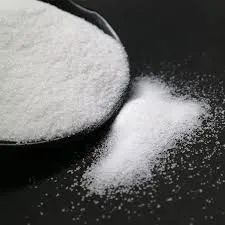Understanding Biodegradable Masterbatch A Sustainable Solution for Plastics
In recent years, environmental concerns regarding plastic waste have surged to the forefront of global discussions. As plastic usage persists in various industries, the questioning of its sustainability has led to innovative solutions that aim to minimize environmental impact. One such solution is biodegradable masterbatch, a significant advancement in the field of materials science aimed at making plastics more environmentally friendly.
Biodegradable masterbatch is a concentrated mixture of biodegradable polymers and additives that can be incorporated into traditional plastics. The purpose of masterbatch is to impart specific properties to the base polymer, which can include color, UV stability, and, in this case, biodegradability. By utilizing biodegradable masterbatch, manufacturers can produce plastic products that break down more efficiently in natural environments, significantly reducing long-term pollution and landfill contributions.
The production of biodegradable masterbatch typically involves various biodegradable polymers, such as polylactic acid (PLA), polyhydroxyalkanoates (PHA), or starch-based polymers. These materials are derived from renewable resources, such as corn starch or sugarcane, and are engineered to degrade under specific conditions, such as temperature and moisture exposure. As these biodegradable materials break down, they return to the Earth without leaving toxic residues, thus promoting a cleaner environment.
One of the primary advantages of biodegradable masterbatch is its versatility. It can be blended with a range of traditional plastics, allowing manufacturers to switch to more sustainable options without overhauling their production processes. Films, bags, packaging materials, and even certain household items can be produced using biodegradable plastic embedded with biodegradable masterbatch, enabling businesses to develop greener products that appeal to environmentally conscious consumers.
biodegradable masterbatch

Moreover, the rise of regulations concerning plastic use around the globe has accelerated the demand for biodegradable options. Governments are increasingly imposing bans on single-use plastics and setting stringent recycling and waste management policies. In response, brands are actively seeking sustainable alternatives to comply with these regulations and enhance their corporate social responsibility profiles. Biodegradable masterbatch serves as a viable solution, offering companies a competitive edge while contributing to the reduction of plastic waste.
However, it is essential to understand that the term biodegradable does not mean these materials disappear instantly. The degradation process can take weeks to several months, depending on various factors such as environmental conditions and the type of biodegradable polymer used. Furthermore, these materials require specific conditions to degrade effectively. This is why reference to standards such as ASTM D6400 or ISO 17088 is crucial; they provide guidelines for the biodegradability of plastics in composting environments, ensuring that consumers can trust these products will break down as intended.
In addition to their environmental benefits, biodegradable masterbatches can also enhance the mechanical properties of plastics. Many biodegradable polymers exhibit good tensile strength and elasticity, which makes them suitable for various applications without compromising the quality of the final product. This characteristic opens up new possibilities in design and functionality, making biodegradable plastics not only an eco-friendly option but also a practical one.
While the adoption of biodegradable masterbatch is promising, it is crucial that consumers remain informed and discerning. Not all biodegradable plastics are created equal, and some may still rely on additives that pose risks to the environment if they do not degrade as intended. Awareness and education about these products can drive better consumer decisions, leading to more responsible purchasing habits.
In conclusion, biodegradable masterbatch epitomizes a significant stride towards sustainability in the plastics industry. From the reduction of waste to meeting regulatory demands and enhancing product functionalities, it offers a multifaceted solution to one of today’s most pressing environmental challenges. As innovation in biodegradable materials continues to evolve, the path toward a more sustainable future in material design looks increasingly promising. Embracing these materials not only aids in reducing plastic pollution but fosters a culture of responsibility and sustainability that is imperative for our planet's health.

